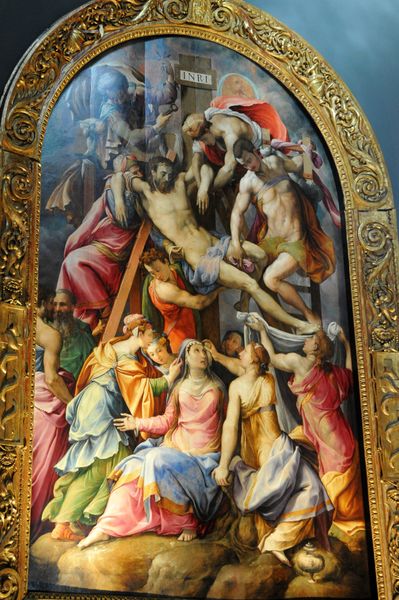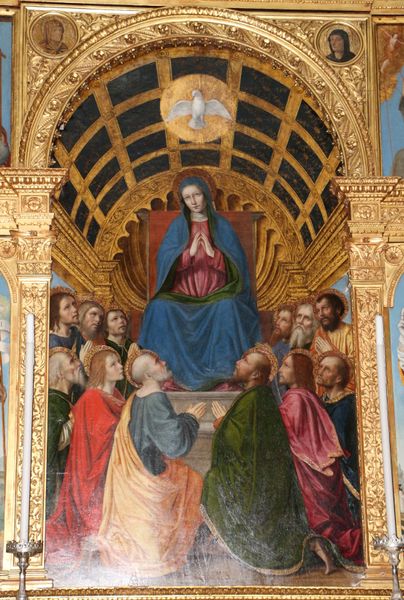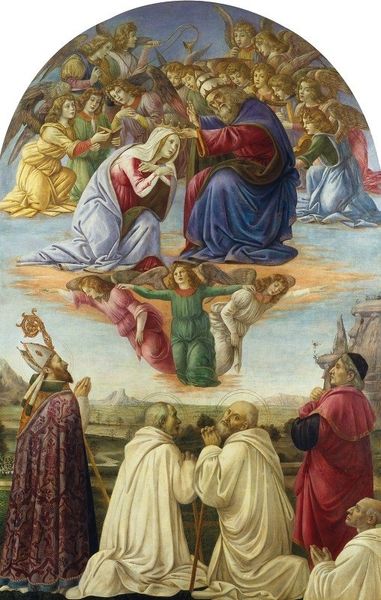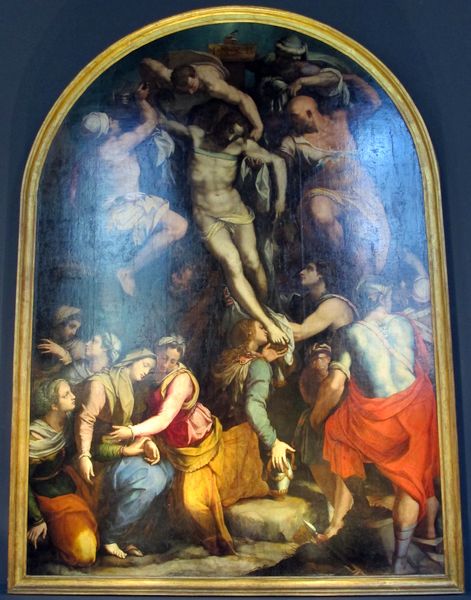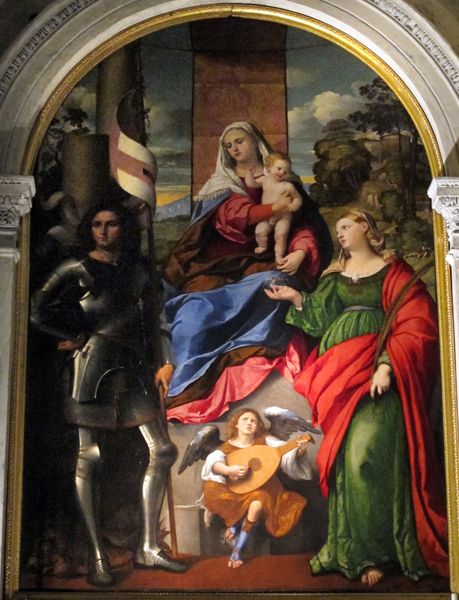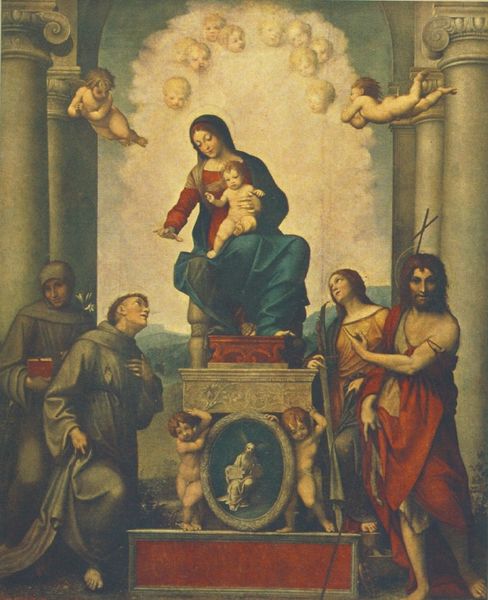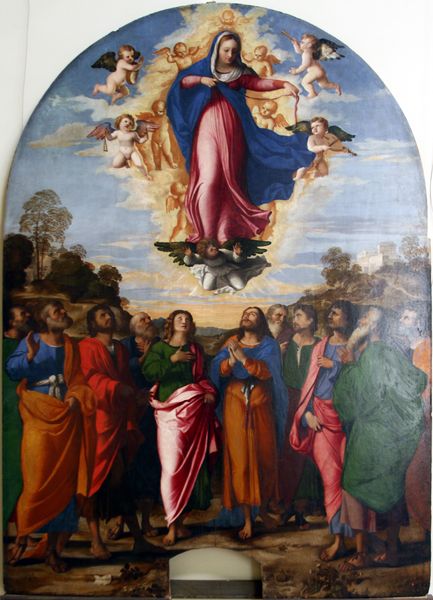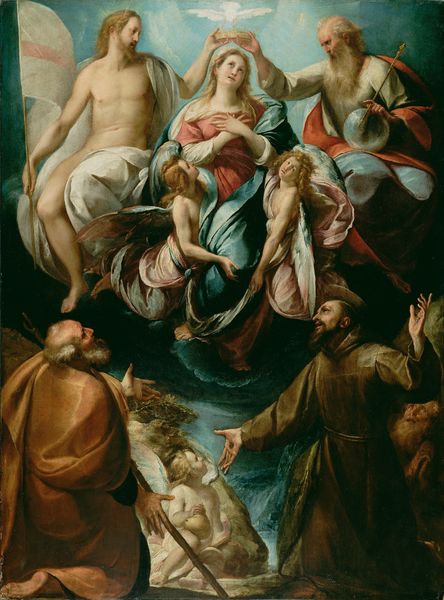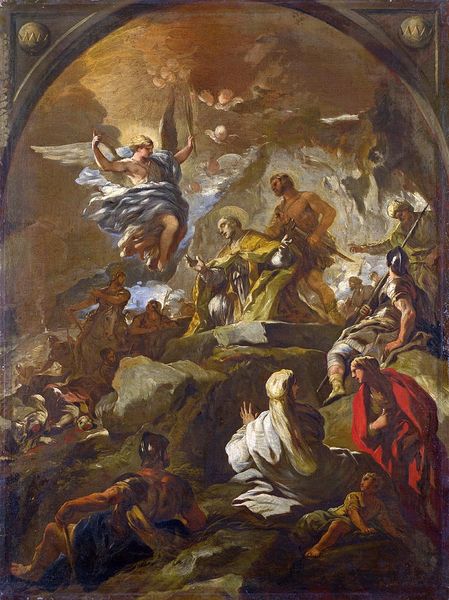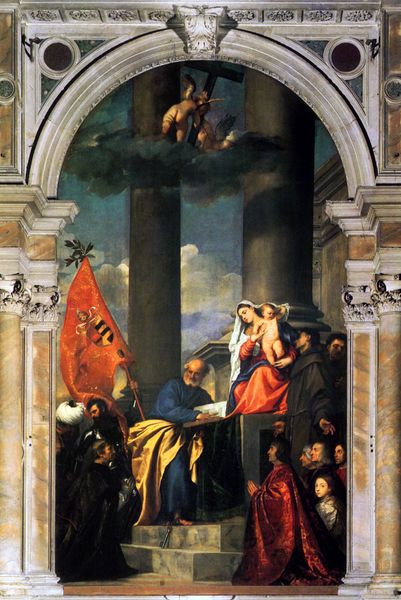
painting, oil-paint
#
baroque
#
painting
#
oil-paint
#
figuration
#
oil painting
#
history-painting
Copyright: Public domain
Georges Lallemand painted this depiction of Jesus at the Temple around the turn of the 17th century. Above the scene, angelic figures carry garlands in a semi-circular composition, framing God the Father. These garlands, or festoons, connect us to ancient Roman art, where they symbolized celebration and sacred space. Here, they crown the divine event unfolding below, adding a layer of solemnity. But consider how this motif has journeyed through time. In Roman art, the garland signified triumph and imperial power. In Lallemand’s painting, it is reborn, now signifying the power of the divine. This transformation speaks to the way collective memory shapes our understanding of symbols. The garland, once a secular emblem, is imbued with new spiritual meaning through art. Its cyclical progression reminds us of the past and present, continuously reshaping our cultural consciousness.
Comments
No comments
Be the first to comment and join the conversation on the ultimate creative platform.
